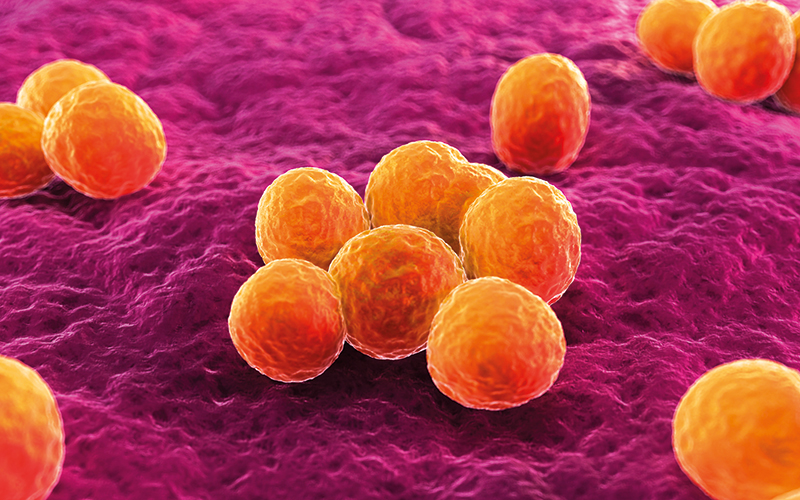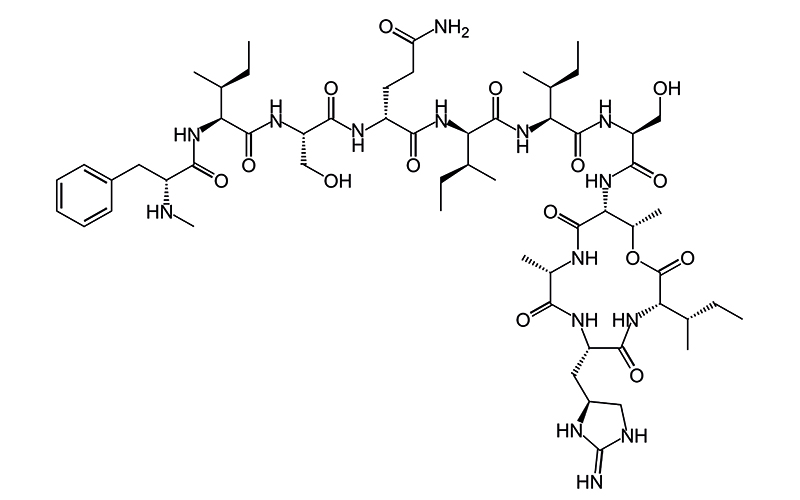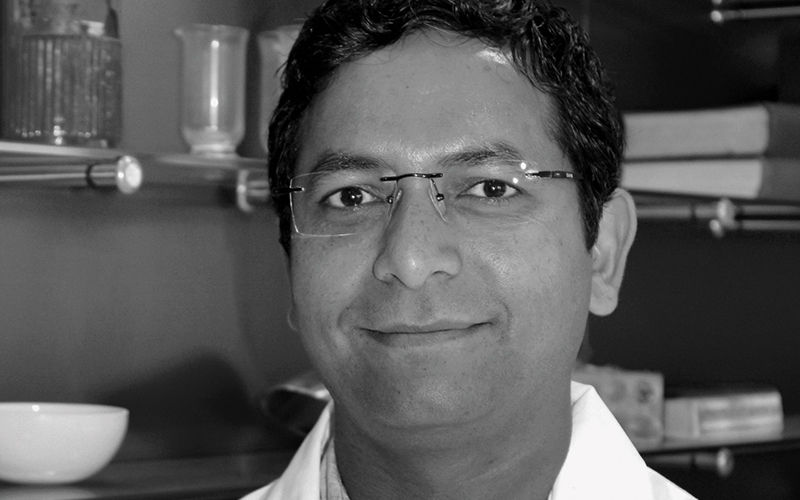Another step has been taken in the battle against antimicrobial resistance with the development of a synthetic antibiotic.

Dr Ishwar Singh believes that out-of-the-box thinking is important for scientific breakthroughs. It has certainly played a role in the latest research he has led, in which synthetic versions of the natural teixobactin molecule that can kill multi-drug-resistant bacterial pathogens, were designed and developed.
The teixobactin antibiotic – discovered in a screen of uncultured bacteria in 2015 by US and German scientists – has been described as a “gamechanger” in the fight against antimicrobial resistance, given its ability to kill other bacteria in soil. But there have been challenges in moving to the next stages of drug development.
“The understanding in the field was that a prohibitively expensive and cationic amino acid building block found in natural teixobactin is important for high potency against multi-drug-resistant bacterial pathogens, such as MRSA,” says Singh, who is an expert in antimicrobial drug discovery and development and medicinal chemistry at Liverpool’s Centre of Excellence in Infectious Diseases Research (CEIDR) – a joint initiative between the University of Liverpool and the Liverpool School of Tropical Medicine (LSTM).
“The synthesis of this building block and its incorporation into teixobactin has been another challenge as it often gives low yields. These were the key bottlenecks,” he adds.
Simplification
Singh and his team simplified the teixobactin molecule by swapping out certain amino acids to reduce the cost and automated the process, speeding up a single coupling step from 30 hours to 10 minutes in high yields. “As we use commercially available low-cost alternatives, the cost of materials has been reduced by more than 2000 times, while improving efficacy and safety,” he says.
The researchers also adapted the process to scale up yield from 30 mg to 1 g scale, and by increasing the scale and size of the reactor, application up to 1 kg scale or higher is now possible. This scalability enables commercial production.
The research found that the synthetic teixobactins killed a wide range of bacteria taken from human patients, where current antibiotics fail, successfully eradicated MRSA in mice and were found to accumulate at sites of infection for up to 24 hours in amounts greater than those required to kill superbugs.
The synthetic teixobactins killed a wide range of bacteria from human patients, where current antibiotics fail
Synthetic diversity enables scientists to select or deselect properties and modify molecules to impact potency and other desirable drug-like qualities. The synthetic teixobactins are also robust and stable at room temperature, meaning a cold chain is not needed. As a result, they have the potential to tackle resistant bacterial infections in settings around the world.
“Our simplified teixobactin designs do not follow the literature,” Singh says. “I feel that it was like changing the dogma in the field and unlocking the medical potential of a promising new class of potent antibiotics capable of killing superbugs.”

Future work
The research – undertaken in association with the University of Lincoln – is the latest in a series of studies that are part of a Small Business Research Initiative (SBRI) project, funded by the Department of Health and Social Care, which has the goal of creating five lead compounds for future use in the battle against AMR.
“Our next steps will be to focus upon the central benefit of a synthetic teixobactin to overcome multi-drug-resistant bacteria in different disease models, scale up the process, followed by safety testing, which, if successful, could potentially be used in hospitals as an investigational new medicine and be turned into a drug fit for treating resistant bacterial infections in humans globally,” Singh says.
An additional 10 million people are predicted to succumb to drug-resistant infections each year by 2050, according to the AMR review commissioned by the UK Government in 2014. “There are real people behind these numbers,” Singh says. “Our ultimate goal is to have a number of viable drugs from our modular synthetic teixobactin platform, which can be used as a ‘last line of defence’ against superbugs to save lives currently lost due to AMR.”
But funding is an ongoing issue and the next step – to fast track the therapeutic benefits of a promising new class of antibiotics, teixobactins, to patients – financing is required. “We are already working in this direction, but it is a quite slow process,” Singh adds.
He hopes that in the future, patients may be treated with just one dose of teixobactin per day for systemic life-threatening resistant bacterial infections. “We aspire to bring new hope to improve and save lives currently lost due to AMR. There is a need for 21st century antibiotics to tackle 21st century bacteria as older antibiotics are failing,” he adds.
Singh’s own career has involved a lot of thinking out of the box, and when he first started independent research, there was almost no equipment in the laboratory.
“I remember buying a shaker from eBay for £83, as a new one was over £5000. This shaker still works. But now we have the appropriate equipment to do the research work. Persistence and self-belief are quite helpful to overcome problems.”
Teamwork is essential too. He concludes: “I feel fortunate to have a team of researchers and collaborators who are helping me to translate ideas to promising real molecules, which have potential to save lives globally.”
Ishwar Singh

- Reader, Departments of Molecular and Clinical Pharmacology and Chemistry, University of Liverpool
- Associate Professor, drug design and development, antimicrobials, antimicrobial resistance, University of Lincoln
- Both Reader and Senior Lecturer, drug design and development, antimicrobials, medicinal chemistry, biological chemistry, University of Lincoln
- Completed PhD in organic chemistry, biocatalysts, nucleosides, nucleotides and DNA protein interactions from University of Delhi, India
- Received an MPhil in organic chemistry from University of Delhi, India
Image credit |Science-Photo-Library




